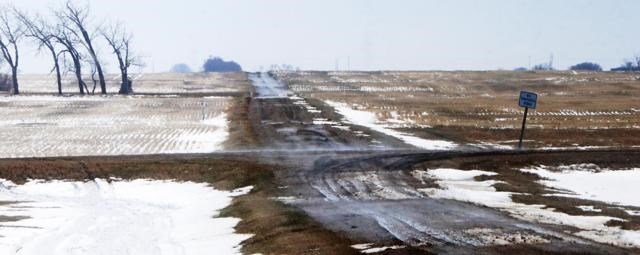The seeding plans are made and the equipment is being prepared for the start of planting of the 2021 crops, and the final piece of the puzzle was the rain and wet snow which fell on the southeast region on April 11-13.
For Creelman-area farmer Marcel Van Staveren and his brothers, the moisture from this storm was invaluable, and may have totally changed the prospects around for this year’s crops, as the plans now are to start seeding possibly by Monday, April 26.
“Prior to the snow, we began our field work, and we were in the field right up to Saturday evening,” said Van Staveren, then the rain began, with about one centimeter falling before it turned to wet snow.
Measuring all of the moisture together, he estimates the fields received two to two-and-a-half inches of moisture, as he noted the snow was wet and heavy and had more moisture than most snowfalls had.
What really helped is that the snow slowly melted over the next several days, allowing the moisture to soak into the ground, and “that’s really ideal. Prior to the snow, it looked pretty bleak,” he said, noting the dry conditions in the top one-metre of soil were the worst he has seen in the 25 years he’s been farming.
He hasn’t planted any seeds yet, but he noted some friends and neighbours did do some planting as a test of the soil conditions.
“We have the ability to seed a lot of acres per day, so if there’s more snow, I’m not afraid of that, because we’ve done a lot of prep work,” said Van Staveren, guessing it will take a few days yet for the fields to dry up enough for the tractors to begin the seeding.
“April 26 is a realistic time. I don’t see any problem with that, as long as we don’t get much more moisture,” he said, noting the forecast was for a cooling down of temperatures in the next while.
The Van Staveren brothers are planning mainly for three crops this season, including durum, red lentils and canola, with maybe five per cent of their acres seeded to soybeans.
They will start with the durum and red lentils first, then the canola acres will follow, as Van Staveren noted this crop is very sensitive to cold soil and frost, so it will go probably after May 10th.
“The price for that commodity is really high, at historic levels, even for locking the prices in for this fall. It’s some of the strongest prices we’ve seen. There’s excellent demand for whatever we choose to grow,” he said, noting the demand for durum is fairly strong also right now.
Some of the demand may be due in part to restrictions for COVID, as people spend more time at home cooking their own food as opposed to going out to eat, and this has led to stronger demand.
“This moisture event is very, very good,” he added, noting they will need more moisture this summer to help the crops withstand the heat that will come in July.
Offsetting the good news for seeding is the fact that input costs have increased significantly, with nitrogen fertilizer costs up 50 per cent, phosphate fertilizer up 100 per cent, and herbicides and fungicides also increasing, although not to the same extent as for fertilizer.
A concern for the coming growing season will be for grasshoppers, said Van Staveren, as they began to be a problem last summer in dry conditions.
“Last year in some of our suite of crops, those numbers were on the rise. That will be something for us to monitor,” he said, noting if they have a dry summer, it will only exacerbate this situation.



